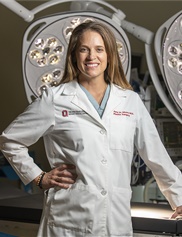Why Choose a Board-Certified Plastic Surgeon
Choose a board-certified plastic surgeon and be confident you are in the care of a highly trained surgeon you can trust.
Since the dawn of time, men and women have tried a number of products and treatments to either fit in with the existing beauty trends or improve their appearance. In the modern day, plastic surgery is the standard approach for looking your best. Yet, that hasn't stopped a few new and odd-sounding options from springing up here and there. Could there be any real science behind these bizarre beauty treatments?
Different beauty products have been tried and discarded throughout history. Many sources cite Cleopatra as the woman who popularized the trend of reddened lips using a combination of red clay, iodine, henna and seaweed. This look was topped off with dark kohl-lined eyes, a style that's continued to today with modern eyeliner.
By the Elizabethan Age, pale skin was the epitome of beauty. According to some sources, this arose because Queen Elizabeth herself wore heavy white makeup to disguise her smallpox scars. Highborn women emulated her look by combining a poisonous mixture of lead powder and vinegar to smooth over their faces, décolletage and hands. The medieval practice of bloodletting with leeches was another option for gaining a more "natural" pallor.
These days, women are far more likely to visit their plastic surgeon than bleed themselves with leeches, but that doesn't mean there haven't been a few curiosities in modern beauty treatments as well. In a world based on science rather than medieval medicine, could it be that some of these treatments have their basis in measurable results?
As an example, one of the latest ingredients in high-end cosmetics is bee venom. The manufacturers of bee venom-based creams and serums claim that the venom promotes collagen production, removes fine lines and wrinkles, and plumps the skin due to the influx of blood to the area. The "bee sting facial" is sometimes marketed as a "natural alternative" to BOTOX® cosmetic injections.
Bee sting therapy has been used in traditional Chinese medicine for years by acupuncturists for a number of ailments, many of whom continue performing these treatments today. Within the United States, the idea of treating symptoms of multiple sclerosis and arthritis using bee stings may be gaining popularity. The primary active component of bee venom is a powerful anti-inflammatory that is purported to be many times stronger than hydrocortisone. So there may be some scientific basis for believing that those suffering from arthritic joints could experience some symptomatic relief from bee venom.
Although it may be tempting to try the latest thing, take time to research before booking any untried "cutting edge" beauty treatment. Just because it's popular doesn't mean that it delivers real results. An ASPS Member Surgeon can help you determine the best course of treatment.
The views expressed in this blog are those of the author and do not necessarily reflect the opinions of the American Society of Plastic Surgeons.















